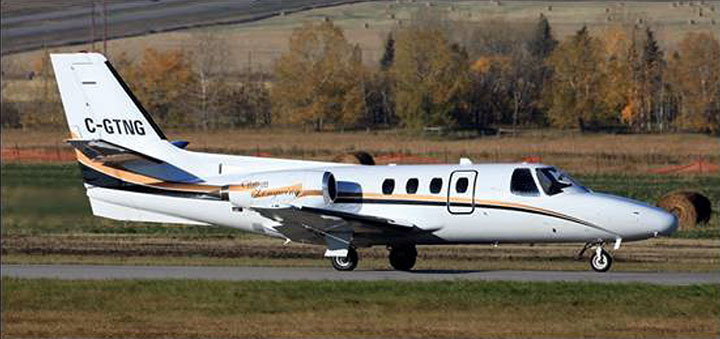Estimated reading time 6 minutes, 42 seconds.
Investigators may never know what caused the high-profile crash of a privately-operated Cessna Citation 500 that killed former Alberta premier Jim Prentice, pilot Jim Kruk, and two other passengers, in October 2016.

As it released its investigation report about the incident on April 26, Canada’s Transportation Safety Board (TSB) said it couldn’t determine the cause of the crash because the aircraft had no flight recording systems on board.
“We don’t like having to say ‘We don’t know’ when asked what caused an accident and why,” said Kathy Fox, chair of the TSB, in a statement.
“We want to be able to provide definitive answers–to the victims’ families, to Canada’s aviation industry, to the Canadian public.
“This is why we are calling today for the mandatory installation of lightweight flight recording systems on commercial and private business aircraft not currently required to carry them.”
Like all aircraft its size, the Citation 500 was not required to have a recorder of any type on board, prompting Transport Minister Marc Garneau to consider a regulation change his department had been mulling over for “quite a while,” he said.
Under the Canadian Aviation Regulations (CARs), flight data recorder (FDR) and cockpit voice recorder (CVR) requirements are based primarily on the number and type of engines, number of passenger seats, and type of operation.
Flight operations with multi-engine, turbine-powered commercial aircraft with six or more passenger seats and requiring two pilots also trigger CVR and FDR requirements.
While many other regulators have adopted a related International Civil Aviation Organization (ICAO) standard prompted by a TSB recommendation in 1991, Canada has yet to follow suit.

“I would like to thank the Transportation Safety Board for their hard work on this investigation,” said Garneau in a statement.
“Departmental officials are conducting a thorough review of the report and will provide a formal response to the Board within the required 90-day time frame.”
According to the TSB report, the most plausible scenario is that the pilot in the 2016 crash, likely dealing with a high workload associated with flying the aircraft alone, became disoriented and departed from controlled flight shortly after takeoff.
The aircraft left Kelowna International Airport on Oct. 13, 2016, on a night instrument flight rules (IFR) flight to Calgary/Springbank Airport, Alta., the report said.
Shortly after takeoff the aircraft departed controlled flight, entering a steep descending turn to the right until it struck the ground, said the report. No emergency call was made, and all of the occupants were fatally injured.
Along with Prentice and Kruk, the crash claimed the lives of optometrist Dr. Ken Gellatly and Calgary businessman Sheldon Reid.
Impact forces and a post-crash fire destroyed the aircraft, which had been privately operated by Calgary-based Norjet Inc. The investigation also determined the pilot did not have the recent flying experience required by Transport Canada for carrying passengers at night.
As it released its investigation report, the TSB raised concerns with the way Transport Canada (TC) conducted oversight of private business aviation in Canada. It said the TSB found no record during its investigation that the aircraft operator had ever been inspected by the regulator.

“As such, TC was unaware of safety deficiencies in its flight operations, such as the failure to obtain approval for single-pilot operation of the aircraft and the pilot’s lack of recent night flying experience required to carry passengers at night,” said the TSB in a statement.
“Since this occurrence, TC has said that it will conduct targeted inspections of private business operators starting in April 2018. The Board will continue to monitor this safety issue.”
In an email to members on April 26, Rudy Toering, interim president and CEO of the Canadian Business Aviation Association (CBAA), said the organization will work to support members before, during and after these inspections.
The association also agrees with the TSB’s assessment that proactive oversight of private operators has been lacking since Transport Canada took this responsibility back from the CBAA on April 1, 2011.
While the cost of data recording technology is said to have decreased since the 1990s, installation costs have been identified as a concern.
As recently as February 2017, the cost of installing a CVR in a Cessna Citation was pegged at about $50,000.
Still, a CVR would provide critical insight into the cause of incidents like the October 2016 crash, recording radio transmissions and ambient cockpit sounds, including pilot voices, alarms, and engine noises, the TSB noted in its report.
FDRs record numerous aircraft parameters, including altitude, airspeed, and heading, many times per second, the TSB noted.
A video recorder would capture images of the crew immediately before, during and after an event. As it stands, investigators are only able to make an educated guess.
Toering said the CBAA board has not decided whether it supports a mandatory requirement for FDRs, and that further consultation with members is needed before an official position can be established.
The full TSB report into the 2016 crash is available here.









It appears that not having a CVR/FDR was the issue. Proper oversight on private operators is where the focus should be. As an Commercial operator in the USA, we are constantly scrutinized by the FAA while private operators use pilots that are not regularly trained just to save money. The standard for safety should be the same whether it is commercial or private operation.
Maybe a good idea to have two pilots on board spliting the workload and backing each other up. Especially in a jet or complex aircraft flying ifr at night.
This could easily be accomplished with the second pilot in a junior position gaining hours and experience.